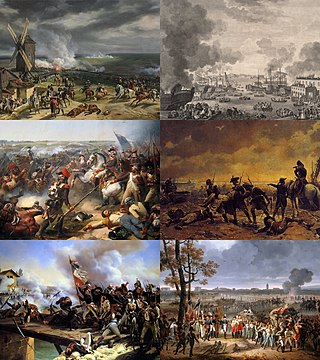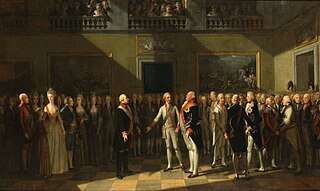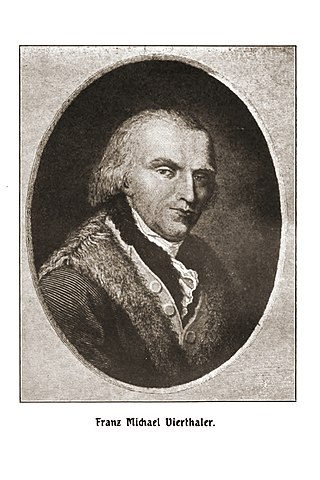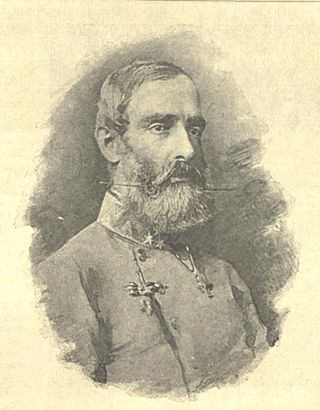| |||||
| Decades: | |||||
|---|---|---|---|---|---|
| See also: | Other events of 1791 List of years in Austria | ||||
Events from the year 1791 in Austria
| |||||
| Decades: | |||||
|---|---|---|---|---|---|
| See also: | Other events of 1791 List of years in Austria | ||||
Events from the year 1791 in Austria
| | This section needs expansion. You can help by adding to it. (October 2015) |
| | This section needs expansion. You can help by adding to it. (October 2015) |
| | This section needs expansion. You can help by adding to it. (October 2015) |

1791 (MDCCXCI) was a common year starting on Saturday of the Gregorian calendar and a common year starting on Wednesday of the Julian calendar, the 1791st year of the Common Era (CE) and Anno Domini (AD) designations, the 791st year of the 2nd millennium, the 91st year of the 18th century, and the 2nd year of the 1790s decade. As of the start of 1791, the Gregorian calendar was 11 days ahead of the Julian calendar, which remained in localized use until 1923.

Marie Antoinette was the last Queen of France prior to the French Revolution and the establishment of the French First Republic. Marie Antoinette was the wife of Louis XVI. Born Archduchess Maria Antonia of Austria, she was the penultimate child and youngest daughter of Empress Maria Theresa and Emperor Francis I. She married Louis Auguste, Dauphin of France, in May 1770 at the age of 14. She then became the Dauphine of France. On 10 May 1774, her husband ascended the throne as Louis XVI and she became queen.

Louis XVI was the last king of France before the fall of the monarchy during the French Revolution.

Leopold II was the penultimate Holy Roman Emperor, as well as King of Hungary, Croatia and Bohemia, and Archduke of Austria from 1790 to 1792, and Grand Duke of Tuscany from 1765 to 1790. He was a son of Empress Maria Theresa and Emperor Francis I, and the brother of Queen Marie Antoinette of France, Queen Maria Carolina, Duchess Maria Amalia of Parma, and Emperor Joseph II. Leopold was a moderate proponent of enlightened absolutism. He granted the Academy of Georgofili his protection. Unusually for his time, he opposed the death penalty and torture and abolished it in Tuscany on 30 November 1786 during his rule there, making it the first nation in modern history to do so. This act has been commemorated since 2000 by a regional custom known as the Feast of Tuscany, held every 30 November. Despite his brief reign, he is highly regarded. The historian Paul W. Schroeder called him "one of the most shrewd and sensible monarchs ever to wear a crown".

The War of the First Coalition was a set of wars that several European powers fought between 1792 and 1797, initially against the constitutional Kingdom of France and then the French Republic that succeeded it. They were only loosely allied and fought without much apparent coordination or agreement; each power had its eye on a different part of France it wanted to appropriate after a French defeat, which never occurred.
The French Revolutionary Wars began on 20 April 1792 when the French Legislative Assembly declared war on Austria. This launched the War of the First Coalition.

The Declaration of Pillnitz was a statement of five sentences issued on 27 August 1791 at Pillnitz Castle near Dresden (Saxony) by Frederick William II of Prussia and the Habsburg Leopold II, Holy Roman Emperor who was Marie Antoinette's brother. It declared the joint support of the Holy Roman Empire and of Prussia for King Louis XVI of France against the French Revolution.

The Russo-Turkish War of 1787–1792 involved an unsuccessful attempt by the Ottoman Empire to regain lands lost to the Russian Empire in the course of the previous Russo-Turkish War (1768–1774). It took place concomitantly with the Austro-Turkish War (1788–1791), the Russo-Swedish War (1788–1790), and the Theatre War.

The French Revolutionary Army was the French land force that fought the French Revolutionary Wars from 1792 to 1802. In the beginning, the French armies were characterised by their revolutionary fervour, their poor equipment and their great numbers. However, the French Revolutionary Army had become arguably the most powerful army in the world by the mid-1790s, as the French armies had become well-experienced and organized, enabling them to comfortably outfight their enemies.

Infanta Maria Luisa of Spain was Holy Roman Empress, German Queen, Queen of Hungary and Bohemia, and Grand Duchess of Tuscany as the spouse of Leopold II, Holy Roman Emperor.

The Austro-Turkish War, also known as the Habsburg–Ottoman War, was fought from 1788 to 1791, between the Habsburg monarchy and the Ottoman Empire. During the conflict, Habsburg armies succeeded in taking Belgrade (1789) and liberating much of central Serbia, also capturing several forts in the Pounje region of the Ottoman Bosnia. Much of those gains were lost in the later stages of the war, that ended by the Treaty of Sistova (1791), with minor territorial changes in favor of the Habsburg side. The war was fought concomitantly with the Russo-Turkish War (1787–1792).

Koča's Frontier refers to the territory liberated by Serbian rebels in the Sanjak of Smederevo, during the Austro-Turkish War of 1788–1791. Rebellion was planed already in 1787, since it was anticipated that the Habsburg Monarchy will enter into war against the Ottomans. The Habsburg-organized Serbian Free Corps, among whom Koča Anđelković was a prominent captain, initially captured and held various central parts of Ottoman Serbia during 1788 and 1789. After the arrival of regular Habsburg armies, who captured Belgrade from the Ottomans on 8 October (1789), the liberated Serbian territory was much expanded and became a Habsburg protectorate under military administration, called Serbia. By the Treaty of Sistova (1791), Habsburg forces had to retreat, and the entire liberated territory was returned to the Ottomans. Such outcome also ended Serbian hopes for liberation through alliance with Habsburgs.

The Society of the Friends of the Constitution, better known as Feuillants Club, was a political grouping that emerged during the French Revolution. It came into existence on 16 July 1791. The assembly split between the Feuillants on the right, who sought to preserve the position of the king and supported the proposed plan of the National Constituent Assembly for a constitutional monarchy; and the Jacobins on the left, who wished to press for a continuation of the overthrow of Louis XVI. It represented the last and most vigorous attempt of the moderate constitutional monarchists to steer the course of the revolution away from the radical Jacobins.

Franz Michael Vierthaler was a distinguished Austrian pedagogue.

Antoine Claude Nicolas Valdec de Lessart was a French politician. He was the illegitimate son of the Baron de Gasq, Président of the Parlement de Guyenne.
Rudolf Ritter von Otto was an Austrian military leader. He began his military career in the army of the Electorate of Saxony, transferred to the Austrian army and had a distinguished combat record during the Seven Years' War and the French Revolutionary Wars.

The Kingdom of France was a constitutional monarchy from 3 September 1791 until 21 September 1792, when it was succeeded by the French First Republic.

Prince Charles Eugène of Lorraine-Brionne, Duke of Elbeuf was the head of and last male member of the House of Guise, the cadet branch of the House of Lorraine which dominated France during the Wars of Religion, remained prominent as princes étrangers at court throughout the ancien régime, and participated in the émigré efforts to restore the Bourbons to the throne. He was an officer in the French and Habsburg militaries during the French Revolutionary and Napoleonic wars.

Archduke Ernst of Austria, Archduke of Austria, Prince Royal of Hungary and Bohemia was a member of the House of Habsburg-Lorraine.
Nathaniel Niles Jr. (1791–1869) was an American physician and diplomat. A graduate of Harvard Medical School, he served as special diplomatic agent in Austria-Hungary and as chargé d’affaires to Sardinia.
![]() Media related to 1791 in Austria at Wikimedia Commons
Media related to 1791 in Austria at Wikimedia Commons